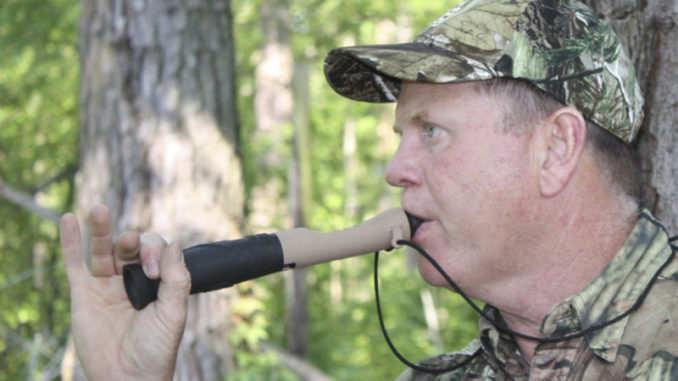
Snort-wheeze call can be damaging if used improperly
One form of vocalization that’s become very popular over the past several years is the “snort-wheeze.” Carolina hunter Steve Cobb said the aggressive sound can be very effective or very damaging to your hunt, and he uses it in specific situations.
“I make this call on my HS Slam Talker call. And while I don’t typically use aggressive grunts or bleats in our area, this specific sound can be very effective,” he said. “I’ll use the snort-wheeze only when I see the buck I’m after. It’s an aggressive challenge call and one that can trigger a fight or flight response. But for big bucks, it’s often fight, and that’s what I want.”
Cobb said the downside of the call is it can alarm and scare deer that you may not be able to see. It’s not a call he recommends using blindly. That’s why he wants a visual on a specific target.
“When I use this call on a big buck, the reaction is typically quick and decisive. I watch him either turn and come straight toward me, with little consideration to the wind, looking for a fight. Or he will turn and go away,” Cobb said.
Be ready when you make this call
Several calls on the market are designed for the snort-wheeze. The call is essentially a drawn-out expulsion of air through your upper front teeth across your lower lip in a phiit, phiit, phiiiiiiiiiiiiiiiiiiii cadence.
Fellow hunter Willie McCutchen said the snort-wheeze is a challenge call. And based on his experience, it’s still not a very loud call in the Carolinas.
“I watched a decent-sized 7-point get spooked by a big 8-point that walked into an area. But the smaller deer didn’t leave the area completely,” McCutchen said. “When the big buck saw the other one lingering close-by, he did a snort-wheeze that caused the smaller buck to immediately scat. But the sound was still subtle. I was close enough to hear it well. But I doubt I could have heard it 100 yards away. The big buck bristled up and left no doubt of dominance. That’s the buck you want to take.”
Cobb said when a deer approaches this or any other sound a hunter makes, the hunter becomes the hunted.
“If you’ve chosen your area well, you’ll likely get a shot. But a big buck typically offers a short window of opportunity if he doesn’t see a deer when he approaches,” he said.




Be the first to comment